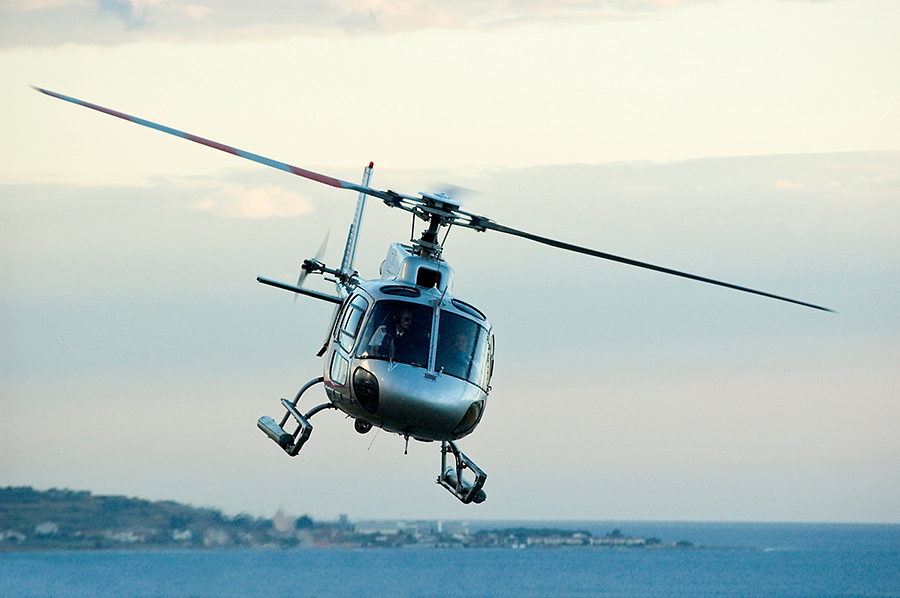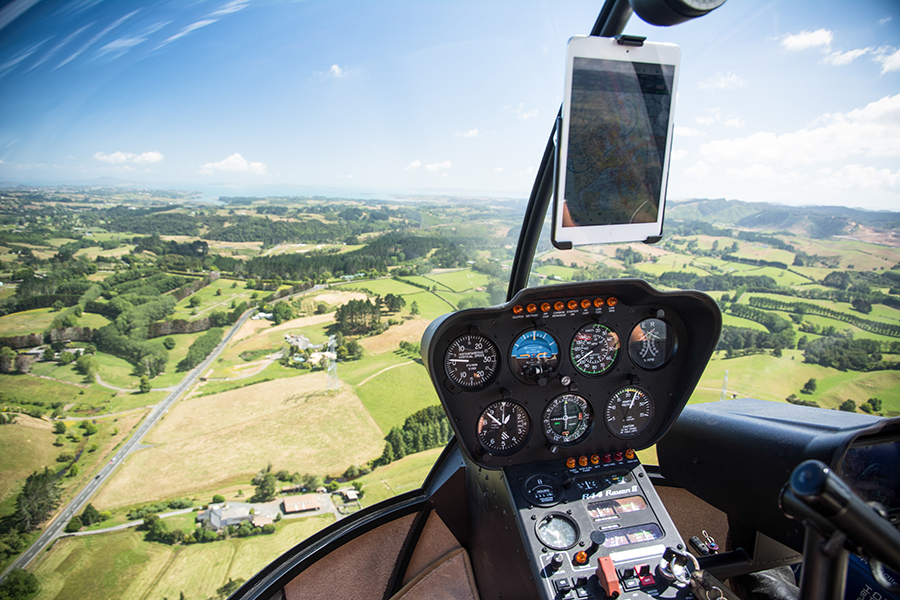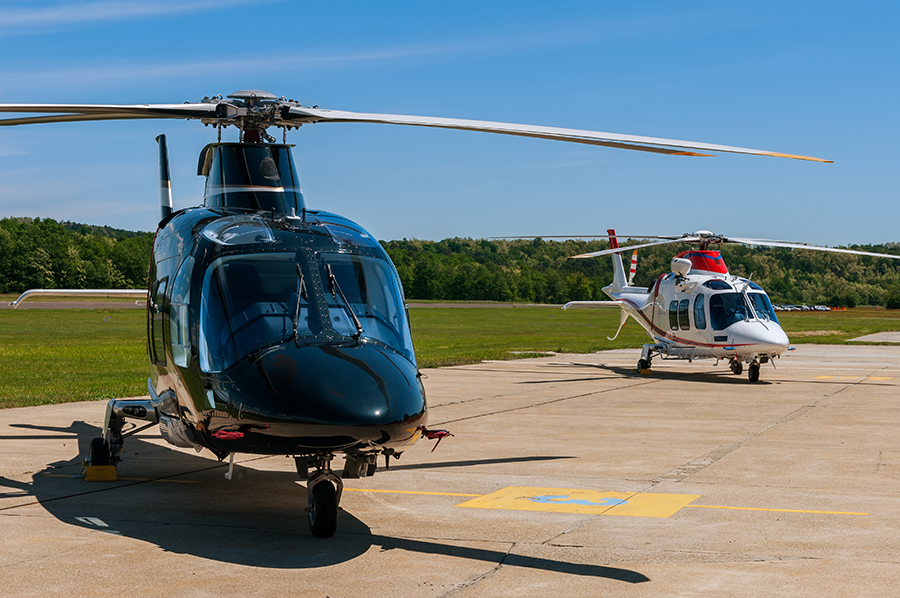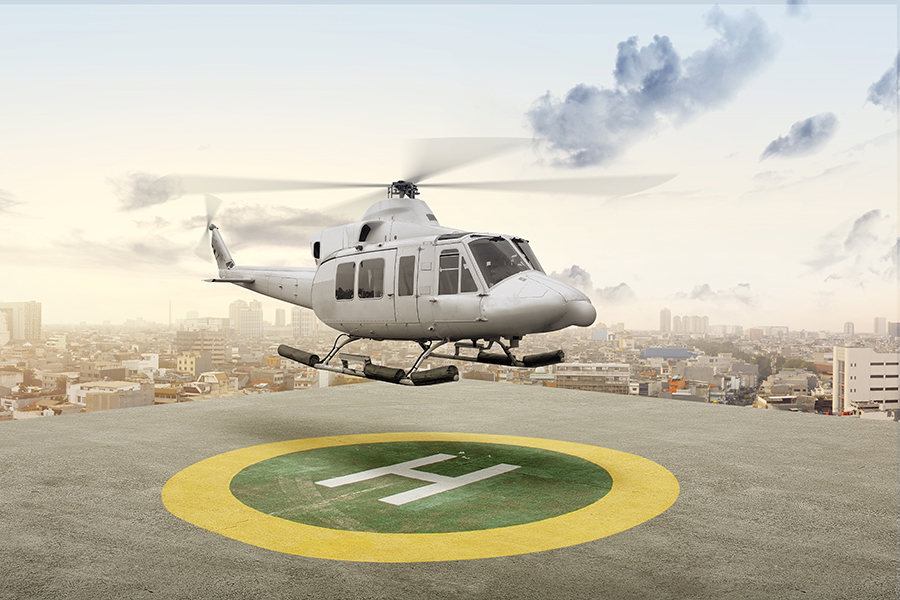Many people think it is a complete mystery that helicopters manage to fly at all. How does this bunch of noisy, whirling, vibrating parts manage to hurl itself into the air, never mind fly under any semblance of control? They reckon that a helicopter is like a bumblebee – it shouldn’t be able to fly, but nobody told the bumblebee. Others – many pilots among them – find helicopter aerodynamics not only a complete mystery but one they would rather leave well alone. In their view, dental treatment without an anesthetic might be preferable to trying to learn about this stuff. After all, it’s incredibly complicated, isn’t it?
Actually, the principles of helicopter flight are really not all that difficult to understand. While a helicopter is a far more complex machine than an airplane, the fundamental principles of flight are the same, and understanding the basics really isn’t all that difficult. So let’s take a look at how it all works…
The Basic Principles Of How Helicopters Fly
The rotor blades of a helicopter are identical to the wings of an airplane. This means that each blade is an aerofoil that, when placed in an airflow, deflects the air in order to produce lift.
The crucial difference in helicopters is that the airflow is produced by rotating the ‘wings’ rather than by moving the whole aircraft. When the rotor blades start to spin, the air flowing over them produces lift, just as when the wings of an airplane start to move. In the case of a helicopter, this is usually known as total rotor thrust (TRT). The direction and magnitude of this can be altered in order to control the helicopter.
Controlling The Helicopter In The Hover
The magnitude of TRT is changed by increasing or decreasing the pitch angle of the rotor blades, and thereby their angle of attack. The pilot does this by using the collective or lever on his left side, which ‘collectively’ alters the pitch of the blades. And as with any aircraft, when the lift is greater than weight the helicopter will take off – or in this case, lift into hover.
However, increasing the lift also means that there is more drag. So when the collective is raised, the pilot needs to open the throttle to produce more engine power in order to prevent the rotor blades from slowing down. In most modern helicopters there is an electronic governor that monitors the rotor RPM and adjusts the engine power as required.
So we raise the collective and increase the lift on the blades, and lift the helicopter into the hover. However, this causes our first problem. If the blades are whirling anti-clockwise, as most helicopter blades do, the fuselage will start to rotate clockwise, due to torque reaction. There are several ways of solving this dilemma. You can have two rotors that spin in opposite directions, as in the Chinook, and more recently, designers have experimented with blowing air out of ducts onto the tail boom. But the most common method of preventing the fuselage from spinning uncontrollably is to have a tail rotor. A small version of the main rotor is mounted vertically at the end of the tail cone and effectively works by pushing the tailback as the fuselage tries to rotate. It’s like a sideways rotor system that is used to push the fuselage straight. You use the pedals to control the pitch of the tail rotor and thereby stop the helicopter from rotating.
Controlling The Helicopter In Flight

So we now have a way to lift the helicopter into the air and hover it. But we also need to be able to move it forwards…and sideways and backward, as one advantage of rotary machines is that they can move in any direction.
Controlling the helicopter in flight is done by altering the direction of the TRT. The cyclic control in the cockpit does this by altering the tilt of the whole rotor system, or what we call the rotor disc – ie the circular disc which the rotors make when they are turning. This means that if, for instance, the pilot moves the cyclic forward, the rotor disc tilts in the same direction. TRT, instead of being vertical, now has a horizontal component, so the helicopter moves forward. But of course, you rarely get something for nothing. As some of the TRT is now being used to move the helicopter horizontally, the vertical component has been reduced. So if nothing is done, the aircraft will start to descend. Therefore, in order to stay level, the pilot needs to raise the collective. But when he or she does this, the angle of attack of the tail rotor blades needs to be similarly increased, using the pedals, to prevent the helicopter from yawing. Thus all the controls affect each other and their use needs to be coordinated, which is why, to a beginner, helicopter flying can seem so difficult.
Other Aerodynamic Effects
The above describes the basics of how helicopters fly. However, there are other aerodynamic effects that take place in helicopter flight. Let’s now take a look at each of the more important ones in turn…
- Flapping to Equality
- Flapback
- Translational Lift
- Ground Effect
- Ground Resonance
- Tail Rotor Drift and Tail Rotor Roll
Flapping to Equality
There are other complications once we actually start to fly the helicopter. In a steady hover in still air, it should be intuitively obvious that the spinning blades will all produce an equal amount of lift. However, with a headwind, or once the helicopter starts to move forward, this is not the case. If we assume a hover with a ten-knot headwind, the advancing blade – that is, the blade moving into the wind – now has an airspeed of twenty knots more than the retreating blade, which is moving in the opposite direction. To put it another way, if the rotor RPM is X knots, the advancing blade has an airspeed of X + 10 knots, and that of the retreating blade is X – 10 knots. This means that the advancing blade has more lift, and if nothing were done, the helicopter would roll sideways and crash.
In fact, the very early helicopters did just this; as soon as they started to move forward they rolled towards the retreating blade side and turned over. The problem was eventually solved by looking at the autogyro, which had been invented back in the 1920s by a Spaniard, Juan de la Cierva. Faced with the dilemma of trying to prevent his early machines from rolling over and thrashing themselves to bits, Cierva discovered that if he made his blades flexible rather than rigid so that they could flap up and down, everything worked just fine. So, having realized this, helicopter designers now did the same thing – they designed their rotors with a flapping hinge, and the flapping cleared up the dissymmetry of lift issue.
How does this flapping work to control the dissymmetry of the lift? Well, with flexible blades, the advancing blade gets more lift, and it, therefore, flaps up. But as it climbs, it receives more of what is known as the ‘induced flow’. This is a part of the airflow that is directed vertically downwards through the rotors as they turn. This induced flow reduces the lift the blade is actually producing, so it starts to fall, or flap down. As it flaps down, it receives less induced flow, and therefore more lift. Meanwhile, the opposite is happening with the retreating blade. This happens continually, with the blades flapping so that a state of equilibrium is reached, with lift over the whole rotor disc being equal. It’s called, unsurprisingly, ‘flapping to equality.
Flapback
Suppose the pilot is in a steady hover in a ten-knot wind and wants to leave the airfield. All he has to do is move the cyclic forward to tilt the rotor disc the way he wants to go, raise the collective so he doesn’t descend, and correct the resulting yaw with the pedals, doesn’t he? Well, not quite. Acceleration causes a‘ flap back’, which is a special case of flapping to equality. As the pilot moves the cyclic forward, the rotor disc tilts forward and downwards, and the helicopter accelerates. As it does this, the advancing blade flaps up, and the retreating blade flaps down, as explained. However, the advancing blade reaches its highest point as it arrives at the front of the helicopter, and the retreating blade gets to its lowest point at the back. So the rotor disc is now horizontal again. Thus acceleration stops, as the disc has flapped back to its original position. So if the pilot wants to increase speed, he has to keep moving the cyclic forward continually to prevent this – or as any instructor will constantly tell him – “push through flap back”.
Translational Lift
The next thing that happens is that at about 10 -12 knots of airspeed the helicopter will suddenly try to climb, all by itself. This is due to what is known as a translational lift, which is effectively a ‘free lift’. What is happening is that the increased speed means that less air is directed downwards through the disc, ie there is less induced flow. Now, remember, induced flow reduces lift, so now the helicopter has more lift, and it will start to climb, sometimes quite dramatically. So the pilot either needs to lower the collective or move the cyclic further forward to convert the lift energy into speed.
Ground Effect
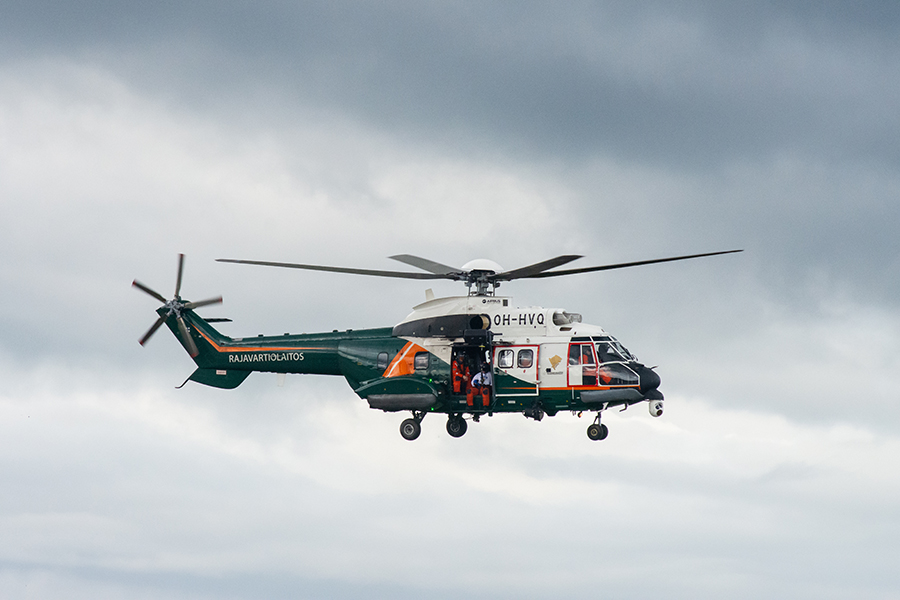
In a free-air hover, or when flying, the air flowing downwards through the rotor disc (downwash) escapes quite easily…so it is not a good idea to stand too close to a hovering helicopter. But if the helicopter is hovering close to the ground, the downwash cannot easily escape. Instead, it forms a cushion of air on which the helicopter can sit. This means that it effectively holds up the helicopter, and less power is required to hover in the ‘ground effect’, as this phenomenon is known.
This ground effect has other consequences. It can make landings quite difficult, particularly for the student pilot. Landing is achieved simply by hovering lower and lower until the ground is reached. At least, that is the theory. But as you lower the collective and get nearer and nearer to the earth, the ground cushion cannot easily escape and becomes compressed, and it can actually stop the helicopter from descending. Unfortunately, this cushion of air is not a stable platform, and the helicopter may well start to slide across it. It can feel to the pilot as though the helicopter is dancing erratically over a solid surface, and in fact the aircraft can literally fall off the ground cushion, possibly resulting in a heavy landing with sideways movement. The helicopter’s skids are not designed for this – you must land vertically – so this can be a problem, particularly for inexperienced pilots.
The nature of the ground affects the strength of this cushion of air. Rough surfaces tend to dissipate it, thereby lessening the ground effect. So students learn to land on grass first since this is very much easier than landing on asphalt or tarmac. When landing on a hard surface, you have to hover lower and lower, and somehow push through the ground cushion, while not forcing the helicopter onto the ground. It’s not as difficult as it sounds, or as some students think, but it does take a fair amount of skill and finesse.
Ground Resonance
Ground Resonance is another aerodynamic effect that can happen during take-off and landing. This is severe vibration resulting from the oscillation of the helicopter when in contact with the ground. The onset is a slow rocking of the fuselage, and if no remedial action is taken early, the vibrations can increase until the helicopter sustains major damage. Ground resonance can be caused by a combination of vibrations in the rotor head and the center of gravity of the rotor disc not being over the center of rotation. If this occurs, a ‘wobble’ will develop, the effect being similar to an unbalanced flywheel rotating at high speed. Unbalanced rotor blades, faulty or unserviceable drag dampers, or incorrect rotor blade tracking, may be responsible.
Ground resonance can also be induced by mismanaged landings or uneven oleo pressure (or tire pressure in wheeled helicopters). The only thing you can do if it happens is to get away from the ground as quickly as possible. Susceptibility to ground resonance varies greatly between different helicopter types, and thankfully it is not something I have ever experienced….maybe I fly the right kind of helicopter!
Tail Rotor Drift And Tail Rotor Roll
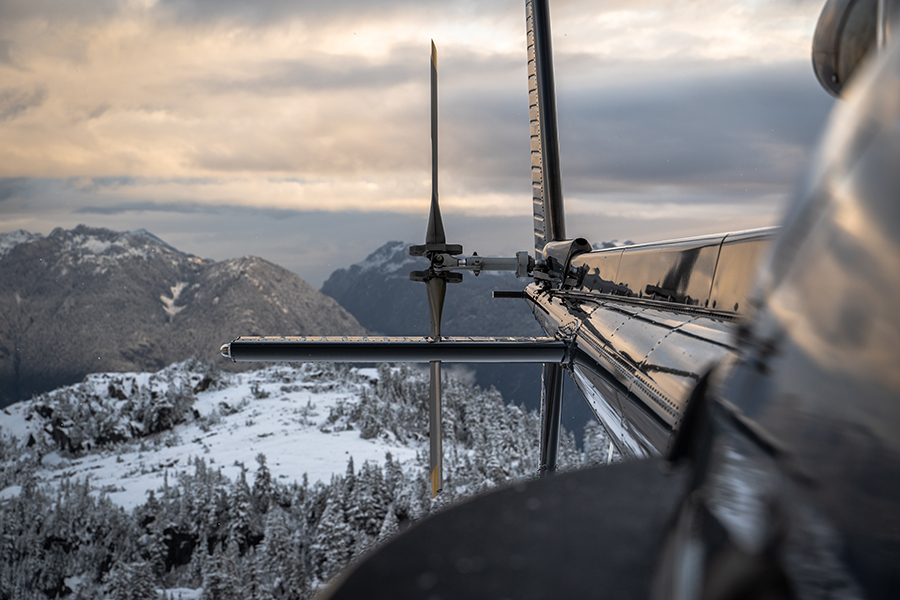
Let us assume that you’ve lifted into the hover, hover-taxied or flown to where you want to go, and landed your helicopter safely. If you do this smoothly and carefully, you may notice that the helicopter does not land on both skids together, but instead, the left skid touches the ground first (in helicopters with counterclockwise rotating rotors). This is because most helicopters actually hover with the left skid low. Why is this? Well, as explained, the tail rotor is there to prevent the fuselage from rotating when the rotor blades start to spin. Now, since the force causing the fuselage to want to turn is actually acting along the whole length of the helicopter, what we really need is two small rotors to provide a correcting force at either end of the fuselage. But in practice, this would be extremely complicated to design, so we settle for a single force of double the required magnitude at the rear of the helicopter. This effectively stops the rotation, but now there is a resultant side force moving the helicopter to the right. We call it ‘tail rotor drift’.
Of course, this sideways movement described above now needs to be stopped, and this can be done in one of three ways: pilot input on the cyclic, adjusting the control rigging so that when the cyclic is centralized the rotor disc is actually tilted, or mounting the gearbox at an angle so that the drive shaft to the rotor is offset. However, in solving the tail rotor drift issue we create another problem. If the tail rotor is mounted below the level of the main rotor – and most are – a ‘couple’ is produced between the horizontal component of total rotor thrust which is being used to offset the tail rotor drift, and the tail rotor thrust itself. This couple tends to roll the helicopter to the left, and the effect is known as ‘tail rotor roll’. It means that the helicopter hovers left skid low. It is not really a problem but is something that pilots need to know about.
Conclusion
So the theory of how helicopters fly is quite complicated, but certainly not impossible to understand. However, the above really only explains the basics. There are other aerodynamic factors to consider if you are to completely understand how helicopters fly in all phases of flight and all situations– vortex ring, retreating blade stall, mast bumping…to mention but a few. But perhaps these are better left until later…
